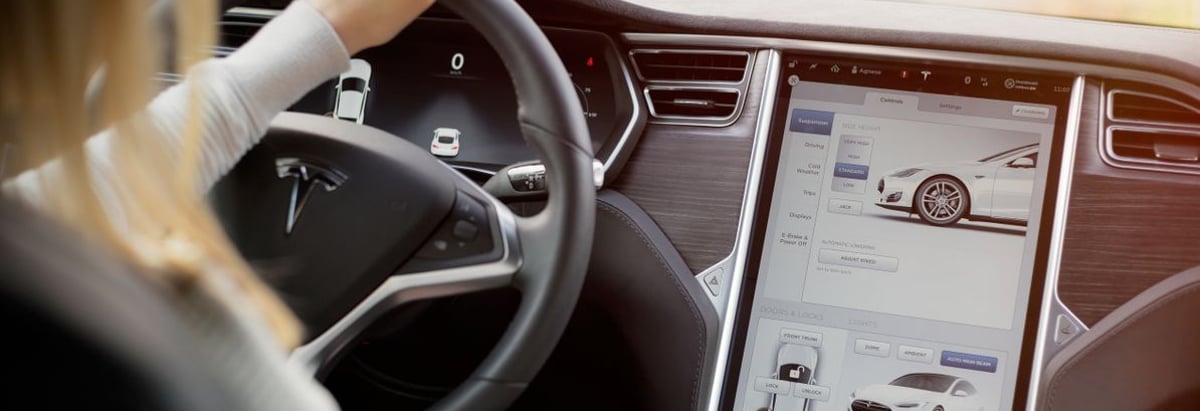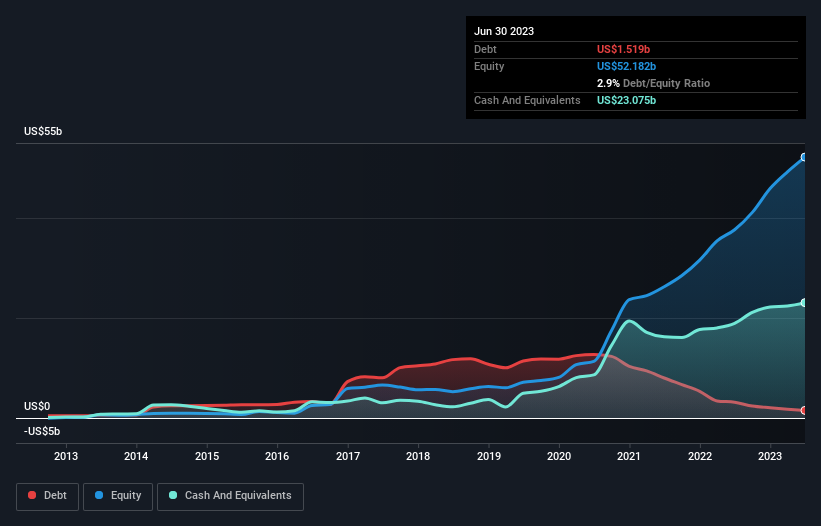Stock Analysis

The external fund manager backed by Berkshire Hathaway's Charlie Munger, Li Lu, makes no bones about it when he says 'The biggest investment risk is not the volatility of prices, but whether you will suffer a permanent loss of capital.' So it might be obvious that you need to consider debt, when you think about how risky any given stock is, because too much debt can sink a company. As with many other companies Tesla, Inc. (NASDAQ:TSLA) makes use of debt. But the real question is whether this debt is making the company risky.
When Is Debt Dangerous?
Debt is a tool to help businesses grow, but if a business is incapable of paying off its lenders, then it exists at their mercy. Ultimately, if the company can't fulfill its legal obligations to repay debt, shareholders could walk away with nothing. However, a more frequent (but still costly) occurrence is where a company must issue shares at bargain-basement prices, permanently diluting shareholders, just to shore up its balance sheet. Of course, plenty of companies use debt to fund growth, without any negative consequences. When we think about a company's use of debt, we first look at cash and debt together.
Check out our latest analysis for Tesla
What Is Tesla's Net Debt?
You can click the graphic below for the historical numbers, but it shows that Tesla had US$1.52b of debt in June 2023, down from US$3.15b, one year before. However, it does have US$23.1b in cash offsetting this, leading to net cash of US$21.6b.

A Look At Tesla's Liabilities
Zooming in on the latest balance sheet data, we can see that Tesla had liabilities of US$27.6b due within 12 months and liabilities of US$10.8b due beyond that. On the other hand, it had cash of US$23.1b and US$3.63b worth of receivables due within a year. So it has liabilities totalling US$11.7b more than its cash and near-term receivables, combined.
Having regard to Tesla's size, it seems that its liquid assets are well balanced with its total liabilities. So while it's hard to imagine that the US$826.1b company is struggling for cash, we still think it's worth monitoring its balance sheet. Despite its noteworthy liabilities, Tesla boasts net cash, so it's fair to say it does not have a heavy debt load!
Also good is that Tesla grew its EBIT at 18% over the last year, further increasing its ability to manage debt. There's no doubt that we learn most about debt from the balance sheet. But it is future earnings, more than anything, that will determine Tesla's ability to maintain a healthy balance sheet going forward. So if you're focused on the future you can check out this free report showing analyst profit forecasts.
Finally, a business needs free cash flow to pay off debt; accounting profits just don't cut it. Tesla may have net cash on the balance sheet, but it is still interesting to look at how well the business converts its earnings before interest and tax (EBIT) to free cash flow, because that will influence both its need for, and its capacity to manage debt. During the last three years, Tesla produced sturdy free cash flow equating to 65% of its EBIT, about what we'd expect. This cold hard cash means it can reduce its debt when it wants to.
Summing Up
While it is always sensible to look at a company's total liabilities, it is very reassuring that Tesla has US$21.6b in net cash. And we liked the look of last year's 18% year-on-year EBIT growth. So is Tesla's debt a risk? It doesn't seem so to us. When analysing debt levels, the balance sheet is the obvious place to start. But ultimately, every company can contain risks that exist outside of the balance sheet. We've identified 1 warning sign with Tesla , and understanding them should be part of your investment process.
If, after all that, you're more interested in a fast growing company with a rock-solid balance sheet, then check out our list of net cash growth stocks without delay.
What are the risks and opportunities for Tesla?
Tesla, Inc. designs, develops, manufactures, leases, and sells electric vehicles, and energy generation and storage systems in the United States, China, and internationally.
Rewards
Earnings are forecast to grow 22.26% per year
Risks
High level of non-cash earnings
Further research on
Tesla
Have feedback on this article? Concerned about the content? Get in touch with us directly. Alternatively, email editorial-team (at) simplywallst.com.
This article by Simply Wall St is general in nature. We provide commentary based on historical data and analyst forecasts only using an unbiased methodology and our articles are not intended to be financial advice. It does not constitute a recommendation to buy or sell any stock, and does not take account of your objectives, or your financial situation. We aim to bring you long-term focused analysis driven by fundamental data. Note that our analysis may not factor in the latest price-sensitive company announcements or qualitative material. Simply Wall St has no position in any stocks mentioned.